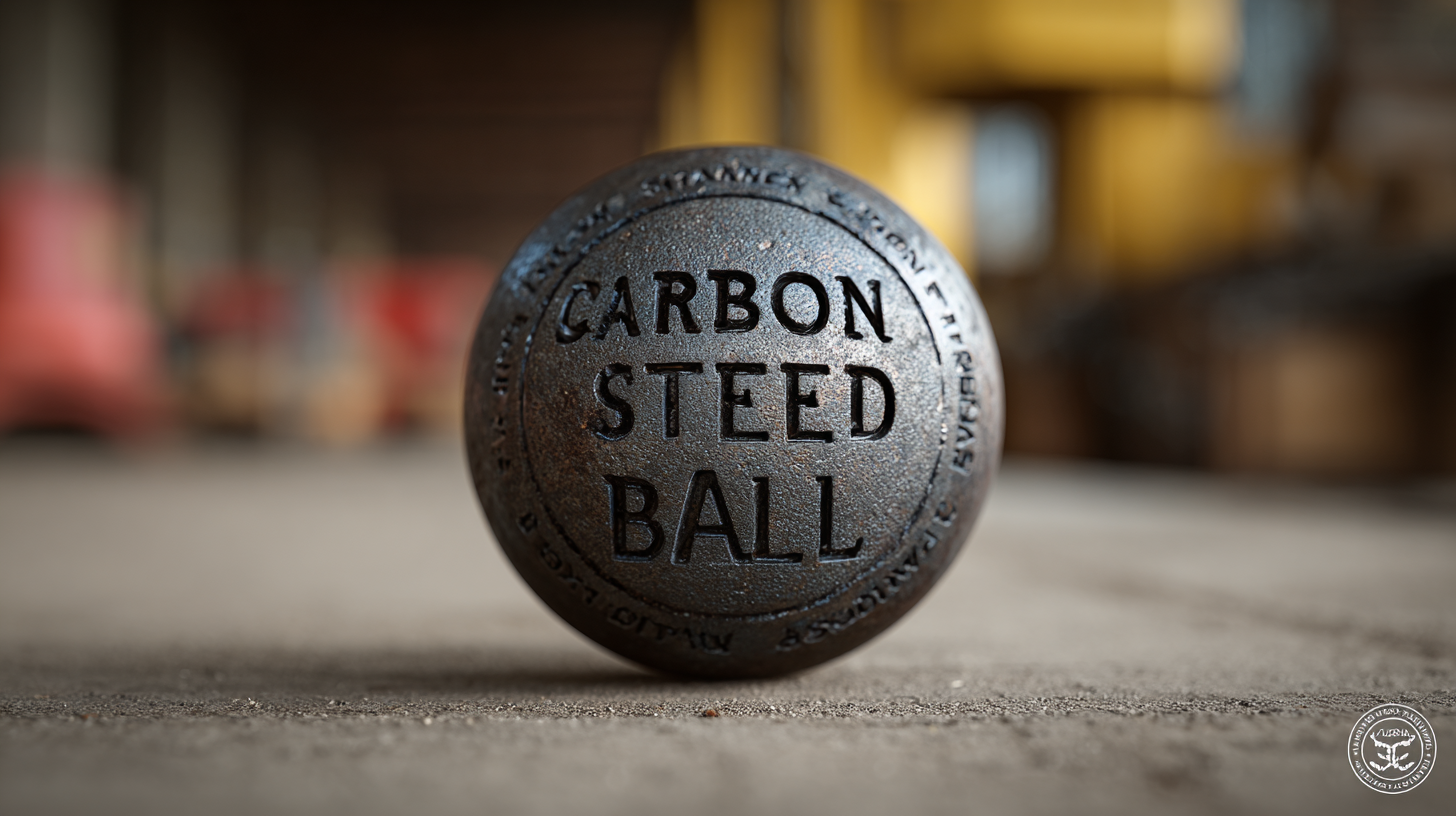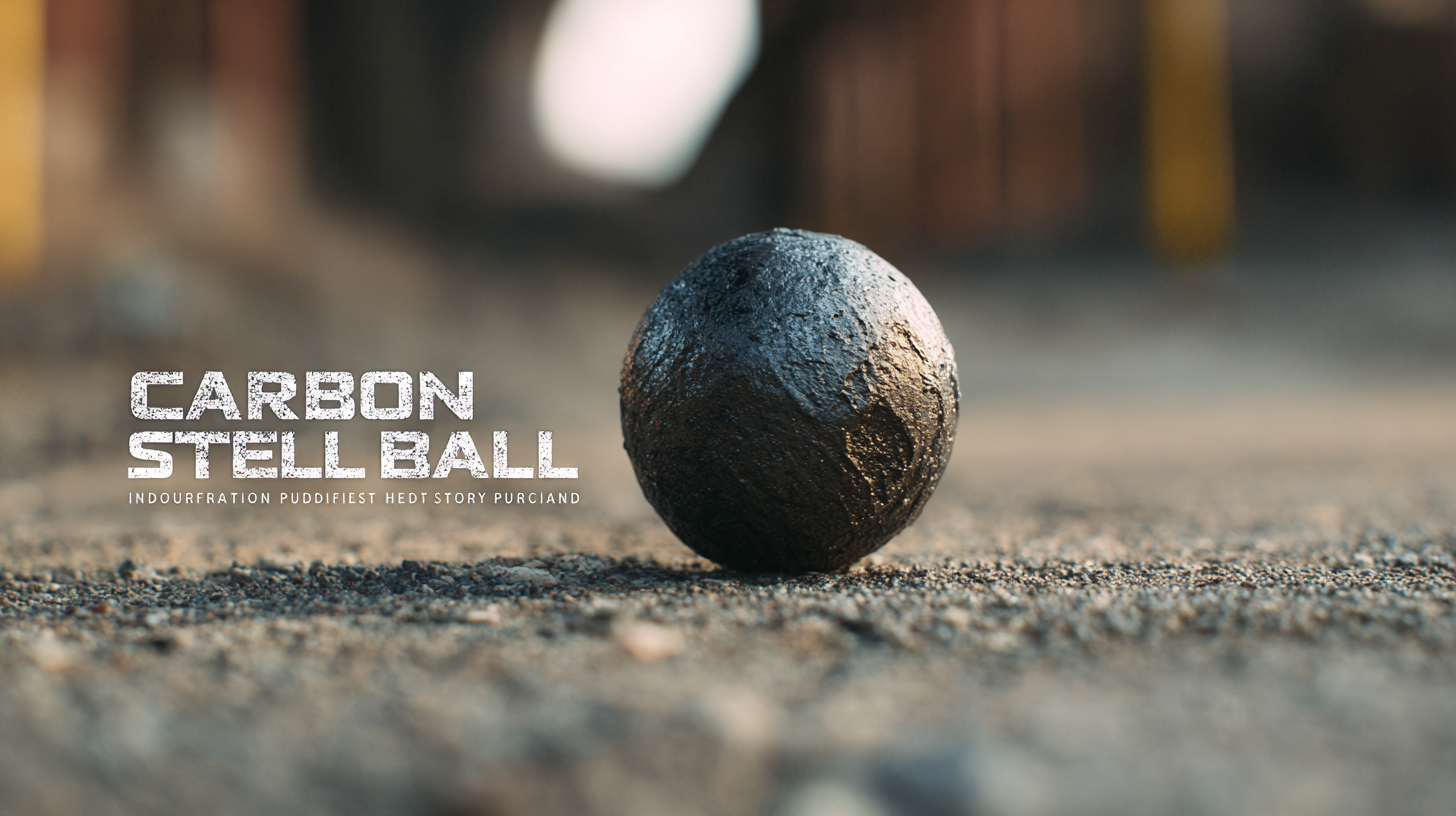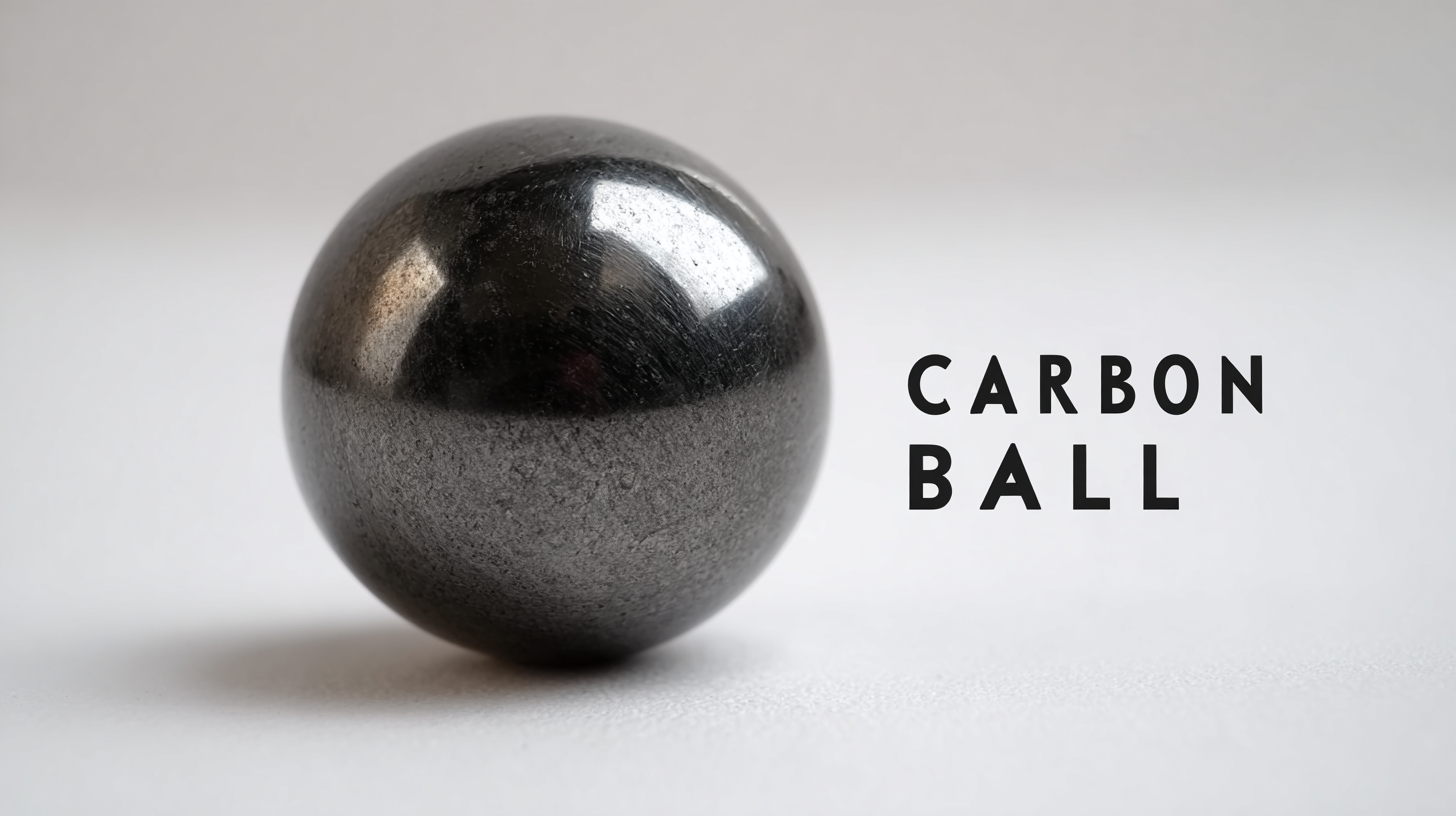
In the manufacturing of carbon steel balls, understanding the industry production standards is crucial to ensuring quality and performance. According to a recent report by the American Society for Testing and Materials (ASTM), approximately 75% of carbon steel balls produced must meet specific hardness and diameter specifications to satisfy diverse industrial applications. These standards not only dictate the mechanical properties of the carbon steel balls but also ensure their durability and resistance to wear in demanding environments. As industries increasingly rely on precision components in processes ranging from automotive to aerospace, adherence to established production standards becomes paramount.

With the global carbon steel ball market projected to reach $1.5 billion by 2025, as per the International Steel Association, manufacturers must remain vigilant in meeting these benchmarks to maintain competitive advantage and ensure customer satisfaction.
When it comes to the production of carbon steel balls, understanding the relevant standards and specifications is crucial for ensuring quality and performance. Carbon steel balls are widely used in various industrial applications, from bearings to valve components, and their specifications dictate their durability and functionality. The most recognized standards in the industry include ASTM A295 and ISO 3290, which outline the mechanical properties, dimensional tolerances, and testing requirements essential for these products.
These standards cover critical aspects such as hardness, microstructure, and surface finish. For instance, the hardness level is typically measured on the Rockwell or Brinell scales, and meeting the specified hardness ensures optimal performance under load. Moreover, dimensional tolerances are significant, as they affect the ball's fit in assemblies and its overall lifespan. By adhering to these production standards, manufacturers can guarantee that their carbon steel balls will perform reliably under various conditions, ultimately leading to increased operational efficiency and reduced costs for end-users.
When discussing high-quality carbon steel balls, two key properties stand out: composition and hardness. The composition of carbon steel typically includes iron and a small percentage of carbon, which significantly influences the mechanical properties of the balls. Higher carbon content generally enhances strength and wear resistance, making these steel balls ideal for demanding applications like bearings and ball valves. Manufacturers often blend various alloying elements, such as manganese and chromium, to further improve toughness and corrosion resistance, tailoring the steel to specific operational needs.

Hardness is another critical factor that determines the durability and performance of carbon steel balls. Measured using the Rockwell or Brinell scale, hardness correlates with a material's ability to withstand deformation and wear. A balance between hardness and ductility is essential; while hard balls provide enhanced wear resistance, excessively hard materials can become brittle. Understanding the specific hardness requirements for a given application is crucial. By selecting high-quality carbon steel balls with optimal composition and hardness, manufacturers can ensure reliability and longevity in their products, ultimately enhancing performance in various industrial applications.
When it comes to carbon steel balls, understanding international production standards is crucial for manufacturers and consumers alike. These standards ensure that products meet specific performance criteria, which is essential for various applications ranging from automotive to aerospace. The two most recognized standards are ISO 3290 and ASTM F2215. Each of these frameworks sets rigorous guidelines for parameters such as hardness, dimensional tolerance, and surface finish, which are fundamental to ensuring the reliability and longevity of carbon steel balls.
A comparative analysis of these standards reveals significant insights. For instance, while ISO 3290 is widely adopted in Europe and focuses on the general specifications for steel balls, ASTM F2215 is more prevalent in the United States and provides specifications for steel balls used in particular applications, including those subject to higher loads or more demanding environmental conditions. Compliance with these standards is not merely a recommendation; it is a necessity for quality assurance and operational safety. Understanding these differences helps stakeholders make informed decisions when sourcing or manufacturing carbon steel balls, ultimately leading to better performance and increased customer satisfaction.
Advanced manufacturing techniques play a crucial role in the production of high-quality carbon steel balls. In today’s competitive market, the precision and consistency of these components are essential for various applications, from automotive to aerospace. Techniques such as computer numerical control (CNC) machining and advanced heat treatment processes enhance the structural integrity and performance of carbon steel balls. These methods enable manufacturers to achieve tighter tolerances and better surface finishes, which are key to ensuring durability and reliability in their end-use applications.

Moreover, the integration of automation and robotics in the manufacturing process has significantly improved efficiency and repeatability. These technologies not only reduce human error but also allow for real-time monitoring and adjustments during production. As a result, manufacturers can produce carbon steel balls with enhanced mechanical properties that meet stringent industry standards. The adoption of such advanced manufacturing techniques is not just about meeting current demands; it also positions companies to innovate and adapt to future market needs, making it a vital aspect of quality assurance in this industry.
The demand for carbon steel balls in global industries has witnessed a significant upward trend, driven by the increasing applications in automotive, construction, and manufacturing sectors. According to a recent market analysis by Grand View Research, the global carbon steel ball market was valued at approximately $2.1 billion in 2022 and is projected to grow at a CAGR of 3.5% from 2023 to 2030. This growth is attributed to the rising need for durable and high-performance components in machinery and equipment, where carbon steel balls play a pivotal role due to their strength and wear resistance.
Moreover, the automotive industry's shift towards electrification and lightweight materials amplifies the demand for high-quality carbon steel balls. A report by Markets and Markets indicates that the use of carbon steel balls in automotive applications is expected to increase by over 4% annually through the next decade. As industries prioritize efficiency and sustainability, the role of carbon steel balls in enhancing the lifecycle and performance of mechanical systems cannot be overlooked. Furthermore, innovations in carbon steel production processes and technologies are expected to meet the evolving standards and specifications of diverse applications, thereby supporting the market's growth trajectory.
| Dimension (mm) | Weight (g) | Hardness (HRC) | Production Region | Annual Demand (Metric Tons) |
|---|---|---|---|---|
| 5 | 2 | 56 | Asia | 10000 |
| 10 | 20 | 58 | Europe | 15000 |
| 15 | 40 | 60 | North America | 8000 |
| 20 | 80 | 62 | Asia | 12000 |
